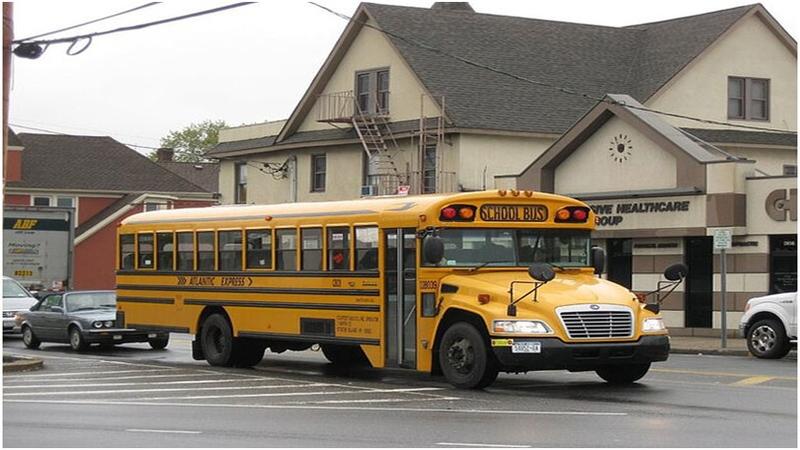
Image via Wikipedia
You are not stuck in traffic. You are traffic. This well-known and unfortunately accurate statement has never been more relevant in buy and congested cities today. With our car ownership increasing faster than we can build new roadways and more people choosing to live a suburban lifestyle, commuting by car is the most popular way of getting to work and school. But it comes at a price.
In this article, we take a look at some of the most common reasons for congestion, how school traffic is a major offender, and what we can do on an individual and school level to help the problem.
School-related traffic is affecting congestion
With growing rates of car ownership per household, increased traffic congestion due to driving children to school is higher than ever. Schools generate some of this traffic by cutting bus routes and reducing availability to a bare-bones service in recent years.
For many other people, it is a personal choice. The availability but unreliability of school bus routes, along with fears about factors out of their control, cause some parents to drive in traffic congestion regardless of the extra time. To improve congestion in both cities and suburban areas, school-related traffic must change drastically.
By increasing school bus transportation options and availability, we can reduce school-related traffic on the roads, free parents of extra time and expense, and help to keep a vital part of community equality and history alive.
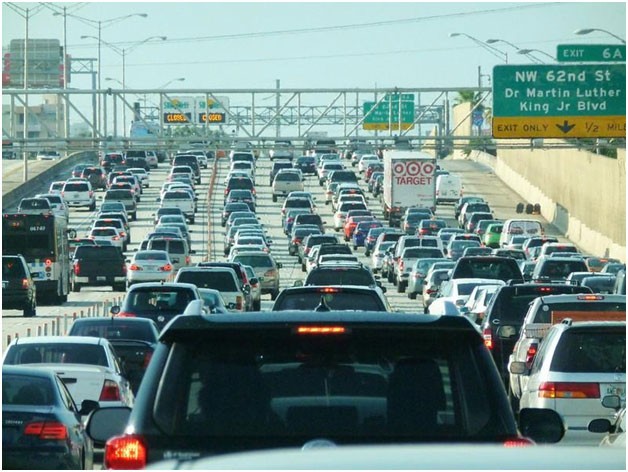
Image by miamibrickell via flickr
Understanding Traffic Congestion
Traffic congestion is defined by slower driving speeds, increased stationary queuing, and longer trip times. In the past, most people only felt the inconvenience of this kind of traffic in the minutes before and after 9 am to 5 pm, as work days began and ended.
In modern times, rush hours have spread considerably, whereas, in some cities, it is more unusual to find road times without congestion problems, even during the weekend.
Beyond the 9 to 5 commute, more parents are incorporating a school run into their day, as they do not have access to, or do not wish to use the school bus system. In cities adding hours every week to drivers' wait times in traffic, this additional school traffic can also negatively affect neighborhoods, with school pickup lines stretching for miles around corners of suburban streets.
Combating congestion is a task that affects everyone. We can all evaluate our travel choices and how they are impacting the community around us. By understanding the main reasons for congestion, we can help to find a solution to tackle it.
According to a recent Ingrix study, the worst cities in 2022 for lost congestion time were
- Chicago, IL
- Boston, MA
- New York City, NY
- Philadelphia, PA
- Miami, FL
Although many other cities suffer severe congestion, many listed cities deal with weather conditions that worsen their traffic woes regularly.
What causes the most congestion
Sheer volume - In many cases, particularly around major cities and large, busy towns, the sheer number of people on the road at the same time. Cities initially built roads and highways with some growth in mind, but the number of cars and people routinely driving them has increased. Expanding major roads is often difficult for city planners, both logistically and financially.
Traffic accidents - With so many cars on the road at one time, carrying distracted and often stressed drivers, increases in accidents are almost expected. Unfortunately, the larger the number of traffic accidents, the more congestion they create for uninvolved cars.
Weather - Expected or unexpected weather affecting visibility and road conditions is a common reason for congestion and a major factor in causing more traffic accidents. Even when people are not bumping into each other, to arrive safely in the snow, rain, ice, or wind, people need to drive slowly and with greater caution.
Construction - The more vehicles we drive, the further roadways need expanding, and the faster we wear out the lifespan of our asphalt roads. Necessary for our long-term safety and comfort, but problematic daily, we all know a road that feels like it is permanently under construction where we can expect traffic each day.

The cost of congestion in our lives
For many people, congestion is a normal part of their day, but just because something is routine does not make it healthy or acceptable. Our time and resources are precious. When congestion costs us both, we see:
- Schedule disruption
- Increased stress
- Reduced time at home and with family
- Higher cost of fuel and vehicle wear and tear
- Missed events, meetings, and work time
The cost of traffic congestion to businesses
Along with the cost to individual citizens, traffic congestion is a big problem for businesses. Truck drivers, delivery vans, employers, and companies that rely on just-in-time logistics are all affected by increased traffic on the road.
Businesses see impacts from congestion both directly and indirectly from:
- Delivery problems and logistical issues
- Late and less productive employees after experiencing congestion
- Higher transportation costs
The community costs of congestion
As a community, increasing our health, quality of life, and experience of living in a city or town should be a priority. With increased traffic congestion, we suffer a loss of many positive community elements, with cities suffering from:
- Poorer air quality and increased allergies
- Residents leaving for less congested areas of the country
- Increased burden on emergency services due to increased accidents
- Higher cost of maintaining roadways
- More green and parkland lost to road construction
Reduction of wildlife habitat as we create more roadways
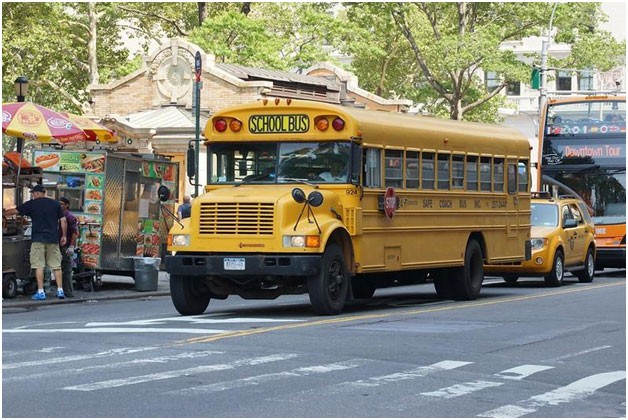
Image by Chris Sampson via flickr
The Role of School Bus Transportation
Officially established in the 1920s, school buses have been helping families and communities balance school needs, work schedules, and resources for generations. So much a part of the social fabric of most towns and cities, most people do not stop to think about the tremendous role they play in our lives.
School buses are a vital part of community equality
Keeping 17.3 million cars from trips that add to congestion for the school run each day, school buses are a vital piece of equality in education, particularly in places with underprivileged communities.
With access to a school bus route, growing up in a home without a vehicle, or an adult driver with free time to drive them to school every day need not affect the quality of education a child receives.
For parents of all socioeconomic situations who wish for their children to receive the best education possible, school buses are an invaluable service to help their children succeed.
Benefits to children of using the school bus
Using the school bus has benefits beyond the reduction of traffic congestion and vehicle emissions. It can help children to develop their social skills. This daily routine allows the development of independence and confidence, increasing social time with other children of different ages.
School Bus Transportation in Reducing Traffic
In 2023, Miami-Dade County introduced 20 electric school buses to its routes, while 30 more are on the way. In a city that experiences some of the worst congestion in the country, keeping cars off the road and reducing emissions is a major step towards tackling two of the big problems with traffic congestion.
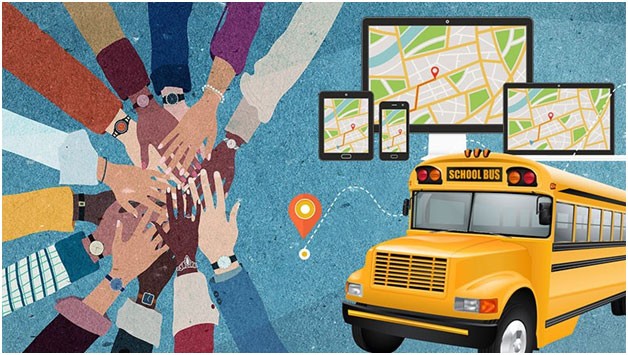
Image via Transfinder
The Role of Technology in Optimizing School Bus Transportation
For many schools, technology is changing how schools schedule bus routes, enabling them to retain more bus drivers as a result.
By investing in the most up-to-date routing technologies like Transfinder, school staff can find fast solutions to availability problems, driver issues, and expected seasonal weather congestion to provide a reliable service to each student, using fewer routes and buses.
By implementing the best technologies in bus routing and scheduling, schools can help to curb traffic congestion by:
- Ensuring a reliable service that parents can count on.
- Making the school bus service faster and easier for parents than using the car.
- Retaining school bus drivers due to more positive working conditions.
- Encouraging students to engage in eco-friendly transport options.
- Lessen the chances of more traffic accidents by school-related car traffic.
- Prevent parents from having to drive in adverse weather conditions.
- Allowing parents to save wear and tear damage and costs to their vehicles.
How technology changes school bus reliability
As congestion is high, school districts are larger than they were, and many schools have more students than in the past, new solutions to school bus problems are necessary.
Schools that implement technology like Transfinder find they:
- Are reducing buses by having more efficient routes.
- Can easily be adaptable to daily change by recalculating routes quickly and seamlessly without interrupting service.
- Work in better cooperation with bus drivers to provide the best service to children.
- Save large amounts of money. Oakwood CDSD in Illinois recently calculated savings of $439,000 after adapting Transfinder school bus technologies.
- Reduce traffic congestion, particularly around school neighborhoods.
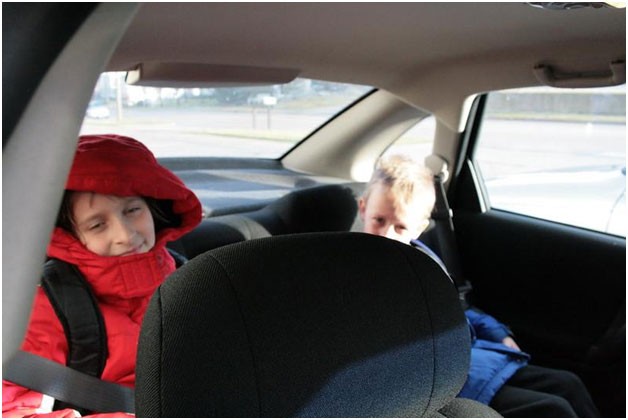
Barriers to School Bus Transportation Adoption
With difficulties organizing bus routes, securing funding, and retaining bus drivers, schools must sometimes reduce the number of buses offered. Without a consistent and reliable school bus option in their area, many parents prefer to drive their children to school each day rather than deal with unexpected changes.
For most parents, working parents in particular, with their schedules in place, having a reliable routine is the most vital part of their day.
Overcoming the barriers
Parents who choose to drive their children to school despite having access to a school bus have often experienced poor service and need reassurance that a school bus service can be a reliable alternative for their children.
Schools choosing to invest in reliable route software and good driver retention practices can help to ensure that bus services are reliable, failures are rare, and allow parents to gain confidence in the system.
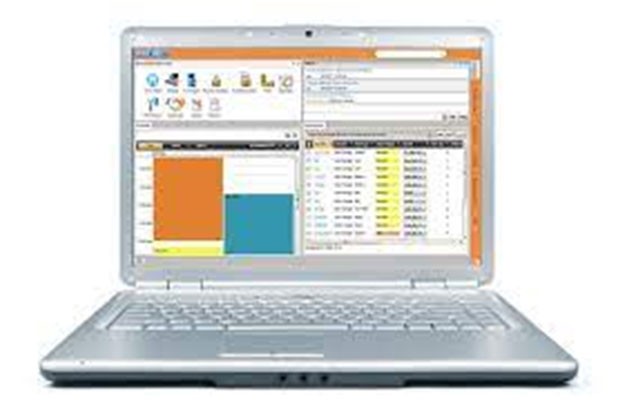
Image via Transfinder
Future of School Bus Transportation
Bus services are still a vital community service that has survived many changes over the years. By implementing changes, they can aid in our battle with traffic congestion now and moving into the future. With great innovations in transportation in the works, in the future, we could see:
- Greater software capabilities continue to provide the most efficient and cost-effective routes.
- Self-driving buses, reducing driver retention problems.
- A greater number of electric-powered buses, lowering daily transportation costs.
Reducing the number of individual vehicles on the road is a crucial part of reducing traffic congestion. School buses are a powerful tool in this battle. Embracing new technologies to keep them reliable, safe, and available ensures that children of all ages and backgrounds can continue to receive equal access to education.
Conclusion
Saving time, money, and vehicle wear and tear while reducing the risks of accidents, distracted driving, and increased daily stress.
Help your community to ensure that school buses are available to ease congestion and provide safe, reliable transportation for every student. To make your voice heard in your community:
- Enquire at your child's school about their plans for expanding and maintaining bus routes using the latest technologies like Transfinder to save money and increase efficiency.
- Ask your PTA members to make school bus availability issues a priority.
- Contact your city government officials about the need for higher budgets and priorities for school bus transportation.
- If you are currently driving your children to school when a school bus is available, consider easing congestion by using the service, and suggesting improvements to the school where necessary.



